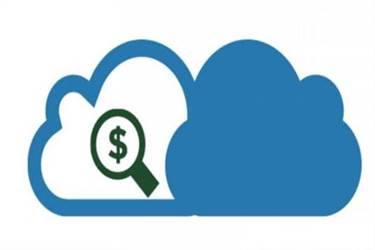What Is Cloud Security Monitoring? A Complete Guide
Срочно нужны деньги? Получи их за 5 минут, оформив займы онлайн
February 10, 2023Marriage ceremony Traditions in the Baltic Countries
February 11, 2023Content
Cloud security is a complex interaction of technologies, controls, processes, and policies. A practice that is highly personalized to your organization’s unique requirements. Businesses need to must remain in compliance with the many laws, regulations, and contracts in place.

Abuse and misuse – cheap infrastructure or pirated software expose companies to security breaches. Hacked interfaces and insecure APIs – APIs and integration points power cloud computing. While APIs help connecting systems, https://globalcloudteam.com/ they can also be used as a back door for attackers. But now, vSphere includes an API called VMsafe that enables firewall vendors such as Altor, Checkpoint and others to move traffic inspection into the VMware kernel.
What is cloud security?
Cloud customers must ensure that their cloud providers adequately fulfill such requirements as appropriate, enabling them to comply with their obligations since, to a large extent, they remain accountable. Similar laws may apply in different legal jurisdictions and may differ quite markedly from those enforced in the US. Cloud service users may often need to be aware of the legal and regulatory differences between the jurisdictions.
Regardless of the preventative measures organizations have in place for their on-premise and cloud-based infrastructures, data breaches and disruptive outages can still occur. Enterprises must be able to quickly react to newly discovered vulnerabilities or significant system outages as soon as possible. Disaster recovery solutionsare a staple in cloud security and provide organizations with the tools, services, and protocols necessary to expedite the recovery of lost data and resume normal business operations.
Implement a Strong Password Security Policy
With the increased range and complexity of services, this is a growing issue. Misconfiguration of cloud services can cause data to be publicly exposed, manipulated, or even deleted. While you currently face this issue, moving to the cloud changes the risk.
Instead of attempting to cover all security aspects – an arguably impossible endeavor – organizations can assess their unique posture and define the security requirements that suit their needs. It often involves assigning risk and sensitivity levels to data and systems and assessing the impact on the organization if the data or systems are compromised. Cannon turned to a single sign-on system from security companies list Symplified, which communicates with Active Directory to verify the credentials of the user who is trying to log in to the cloud application. Google Apps uses APIs to offload authentication of users to a single sign-on provider, Cannon says, but with eLeap, the system needed to use an authentication adapter. Perhaps the best way to further understand cloud security is through specific examples.
Centralizing your data security
This ensures that professionals understand how to secure the cloud and what tools are most effective. Cloud native applications commonly include open source components, which may include a large number of dependent packages. It is important to scan these components and their dependencies for open source vulnerabilities.

For example, if an accounting department employee is given access to approved paychecks and is also responsible for defining salaries in the system, that employee can funnel funds into their own bank account. A SIEM can help understand this huge volume of information, arriving as many data streams in different formats, by normalizing and storing it in a central repository. A SIEM can correlate and aggregate data to provide security insights and generate actionable alerts for security teams. Auditing – powerful monitoring and auditing capabilities can help you maintain compliance with the regulations applying to your organization. Exabeam Threat Intelligence Service – or real-time threat detection insights. Exabeam Threat Hunter – for setting up automated threat detection and alerts.
Cloud security with Exabeam
Current cyber threats operate mostly with a high degree of sophistication. Thus, for your cloud security services to be effective against them, you need to incorporate them into an in-depth defense strategy. This means a strategy that layers several security mechanisms that can counter sophisticated threats should one defense fail. Since users are the weakest link in the security chain, something must be done to strengthen that link. Now, since it’s their lack of security awareness that’s likely exposing them to threats, education is the best solution. Do they have information that maps their security controls with specific regulatory requirements?
- When we look at the cloud computing industry, it’s a disparate market without a central governing body where businesses can go for guidance.
- But while cloud environments certainly offer capable solutions, they also attract a new set of risks that organizations are not prepared to deal with.
- Web security solutions, which sit between users and the internet in typical scenarios, provide administrators the means to secure these connections and protect them against cyber threats.
- As an additional layer of security best practice and protection, you should also implement multi-factor authentication.
- Compliance are requirements in place that include data and applications in cloud environments, such as risk assessment and compliance assessment.
Exposed, broken and hacked APIs are responsible for major data breaches, exposing financial, customer, medical and other sensitive data. Because APIs turn certain types of data into endpoints, a change to a policy or privilege levels can increase the risk of unauthorized access to more data than the host intended. As companies continuously transition to a fully digital environment, the use of cloud computing has become increasingly popular.
The business benefits of switching to a secure cloud
Another element of cloud security best practice is to secure your user endpoints. The majority of users will access your cloud services through web browsers. It’s therefore critical you introduce advanced client-side security to keep your users’ browsers up-to-date and protected from exploits. Using cloud technology, you are sending data to and from the cloud provider’s platform, often storing it within their infrastructure. Encryption is another layer of cloud security to protect your data assets, by encoding them when at rest and in transit.

